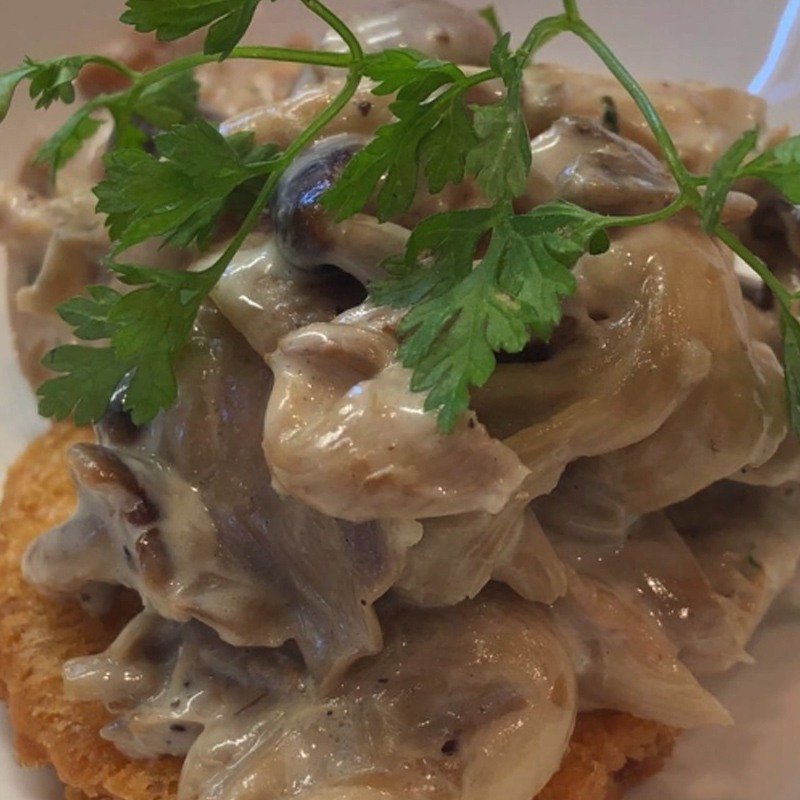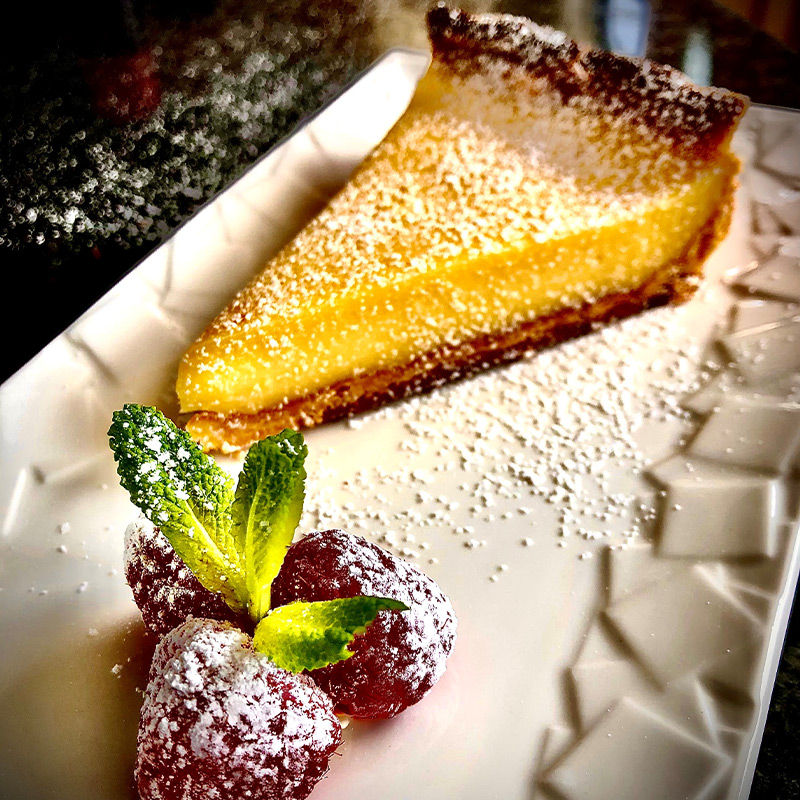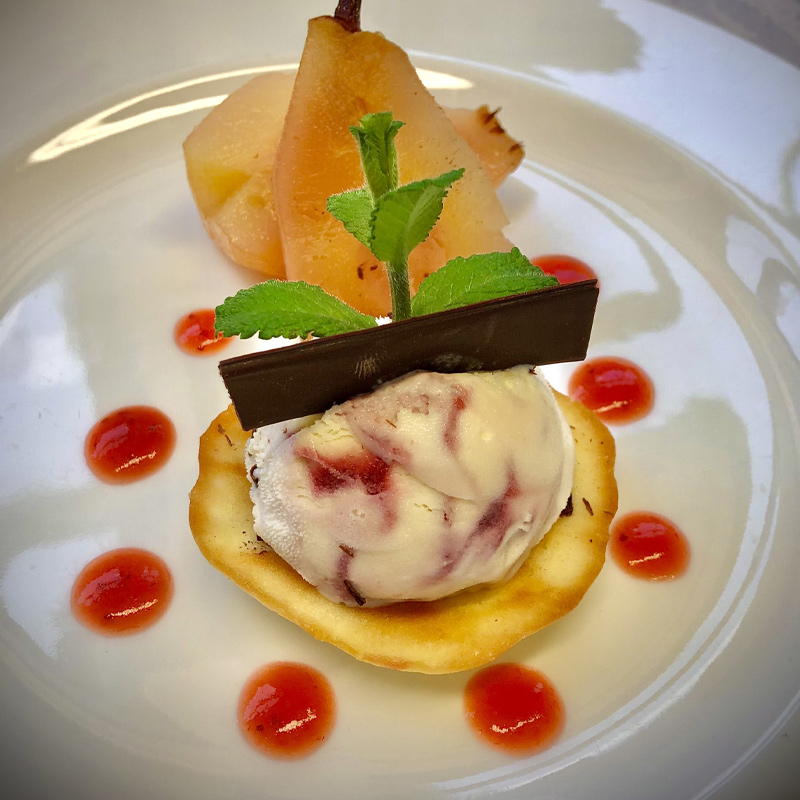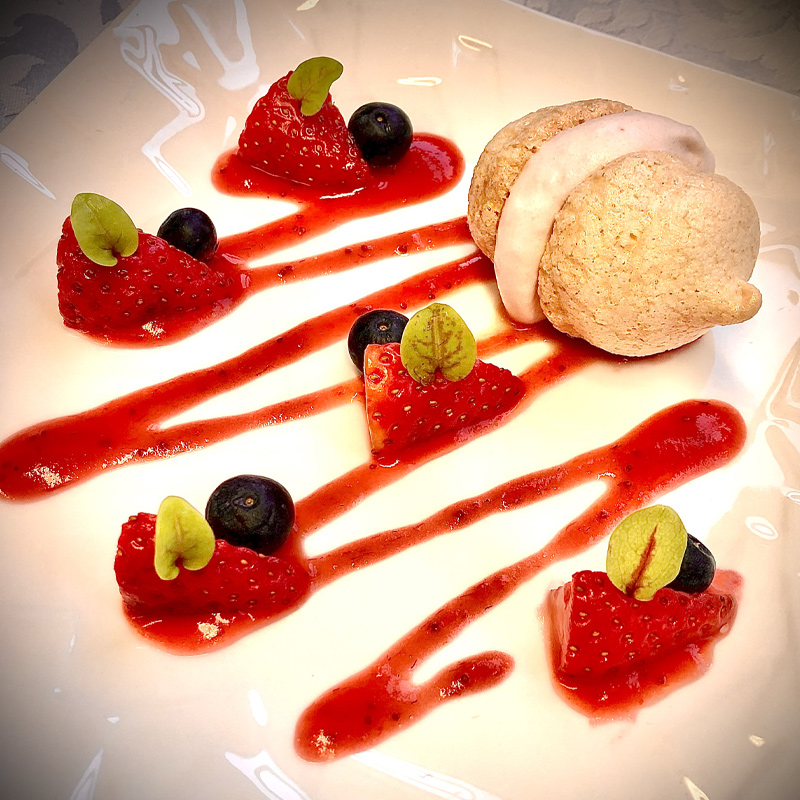The best of French cuisine
Caroline is a fully qualified Corden Bleu chef and takes a great pride in the perfect and delicious food served on board the Aprés Tout. Our meals are paired with great regional wines, many of which are Grand and Premier Cru.
Cordon Bleu cuisine
After passing my Certificate at the Corden Bleu school, I went to work for an extremely upmarket outside catering company in the Lake District in England – this was such a wonderful place to work and we found ourselves catering in all sorts of exciting places such as Castles, an island in the middle of Lake Windermere and many Stately homes!
In 1991 with my husband Rory we first ventured to France and started working on a river cruiser in Provence, we loved the life style immediately. France has such wonderful produce and catering to 12 passengers was a dream come true. I love following the seasons in France, for example in the Spring the markets are full of the white and green asparagus in abundance while in September it is all about wild mushrooms.
Catering to a small select group is such a great pleasure, providing meals of the highest quality to our passengers on board, discussing their requirements and ensuring they leave happy and fulfilled with the food is my goal.
My kitchen on the Apres Tout is a perfect ‘show kitchen’ and has plenty of room for any passenger who might be interested to sit, chat and watch or even to try their hand at a favourite dish prepared during the week which they would enjoy to learn!of the surrounding countryside. Return to the Apres Tout for a gala dinner with wonderful wines to match and a fond farewell.
Recipes
Each day onboard the Après Tout, the gourmet food is expertly prepared by Caroline and paired with superb regional wine. Here are a selection of recipes to try for yourself.

Wild Dijon mushrooms
Served in a cream sauce

Creme brulee
Made with white chocolate

White chocolate tart
A white chocolate treat

Salmon with Sweetcorn Pancakes
With saffron sauce

Poached Pear with Tuile

Strawberry Meringues
Menu suggestions
Suggestion 1
Roasted Scallops with Carrot Puree & Baby Vegetables
Duck Breast with Redcurrant & Port Reduction
Fondant Potatoes with Roasted Vegetables
Cheese course with Breads & Biscuits and fruit
Black Forest Gateau with Cherry Coulis
Wine pairings:
St Aubin 1 Cru
Cheateauneuf Du Pape
Suggestion 2
Asparagus with Foamy Hollandaise, Parma Ham Crisps
Roast Fillet of Beef with a Red Wine Reduction
Gratin of Potatoes and Wild Mushrooms
Cheese course with Breads & Biscuits and fruit
White Chocolate Tart with Mango Sorbet
Wine pairings:
Meursault
Corton Grand Cru
How to taste wine
| Number 1 – ‘Sight’ When you first pour the wine in the glass, look at it for any signs of problems. The wine should be clear and shiny, limpid, without cloudiness or a strange colour. White wines will become more golden with age and reds more orange tinged, but neither should ever be brown! |
||
| Number 2 – ‘Sniff’ Put nose in the glass and smell. The first nose is primarily to detect any bad aromas – the wine should not smell musty, or of rotten eggs, bleach or rotting apples. It should have a pleasant aroma. |
||
| Number 3 – ‘Swirl’ Swirl the wine around in the glass vigorously. This will oxygenate the wine and allows the flavour molecules to be released increasing and enhancing the flavour. |
||
| Number 4 – ‘Sniff again’ This second nose should normally be more aromatic than the first. For your own enjoyment try to identify any aromas you can detect – Flowers, yellow fruits like apricots or peaches, light red fruits like cherries or raspberries, dark red fruits like blackcurrants or blackberries, honey, vanilla, pepper, spices, tobacco….. Keep it fun and light-hearted; it’s not a test! |
||
| Number 5 – ‘Sip’ Take some wine in your mouth and swish it around in your mouth to try and make sure that all the parts of your mouth and tongue have been covered. See how the flavours in your mouth compare to what you had smelled – a wine can be very fruity on the nose but less so on the palate, or vice versa. Does the flavour increase in intensity or drop off quickly; do the aromas change, is it better or worse than you expected? |
||
| Number 6 – ‘Spit or swallow’ Up to you to choose if you want to spit or swallow the wine – depending on how many wines you will be tasting and who’s driving! Once you have spat the wine out, see how long the flavours remain on your palate; this is what we call ‘persistence’. As in many things – the longer the better! |
Discover our wine connosieurs cruise along the waterways of Burgundy
